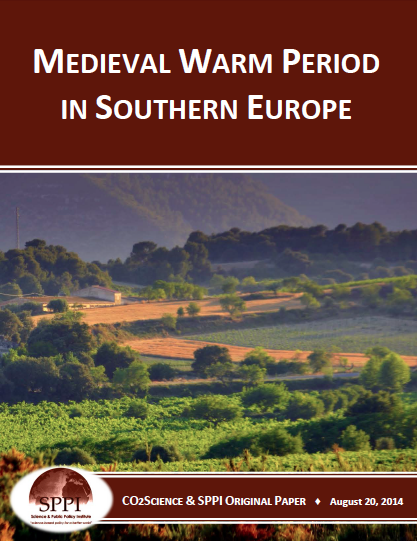News / Science & Technology
MEDIEVAL WARM PERIOD IN SOUTHERN EUROPE

Was there really a global Medieval Warm Period? The IPCC used to acknowledge there was; but they have long since changed their view on the subject. Mounting evidence, however, suggests they were wrong to do so; and in this summary, new and important data from Southern Europe that support their original belief are described and discussed.
Working with a core of 2.5 meters length, which they sampled at intervals of 2 cm in the upper 1 meter and at intervals of 5 cm below that depth, MartinezCortizas et al. (1999) derived a record of mercury deposition in the peat bog of Penido Vello in northwest Spain (43°32'N, 7°34'W) that extends to 4000 radiocarbon years before the present, which they analyzed for a number of parameters. This work revealed, in their words, "that cold climates promoted an enhanced accumulation and the preservation of mercury with low thermal stability, and warm climates were characterized by a lower accumulation and the predominance of mercury with moderate to high thermal stability." And based on these findings and further analyses, they derived a Was there really a global Medieval Warm Period? The IPCC used to acknowledge there was; but they have long since changed their view on the subject. Mounting evidence, however, suggests they were wrong to do so.
Working with a core of 2.5 meters length, which they sampled at intervals of 2 cm in the upper 1 meter and at intervals of 5 cm below that depth, MartinezCortizas et al. (1999) derived a record of mercury deposition in the peat bog of Penido Vello in northwest Spain (43°32'N, 7°34'W) that extends to 4000 radiocarbon years before the present, which they analyzed for a number of parameters. This work revealed, in their words, "that cold climates promoted an enhanced accumulation and the preservation of mercury with low thermal stability, and warm climates were characterized by a lower accumulation and the predominance of mercury with moderate to high thermal stability." And based on these findings and further analyses, they derived a temperature history for the region that they standardized to the mean temperature of the most recent 30 years of their record.
